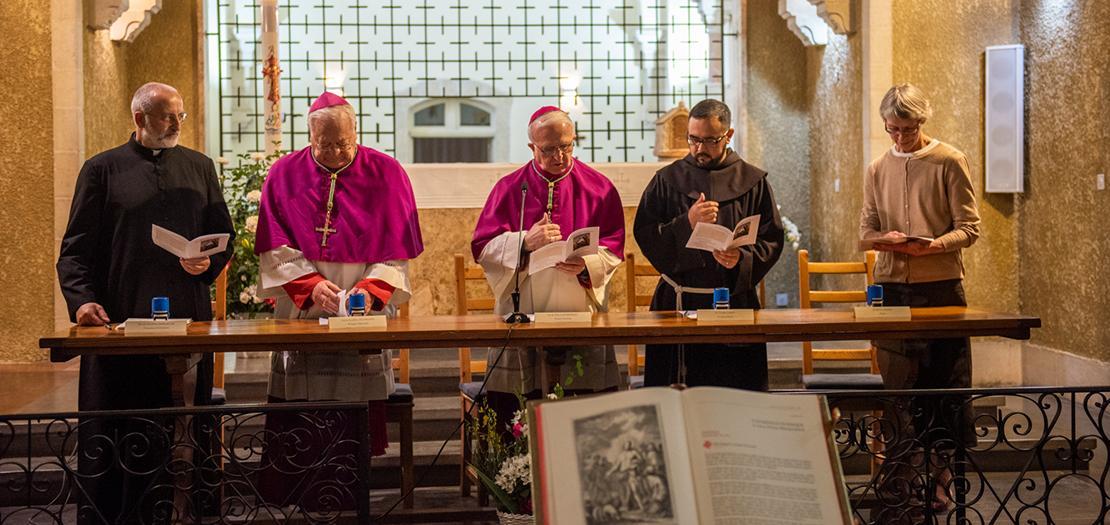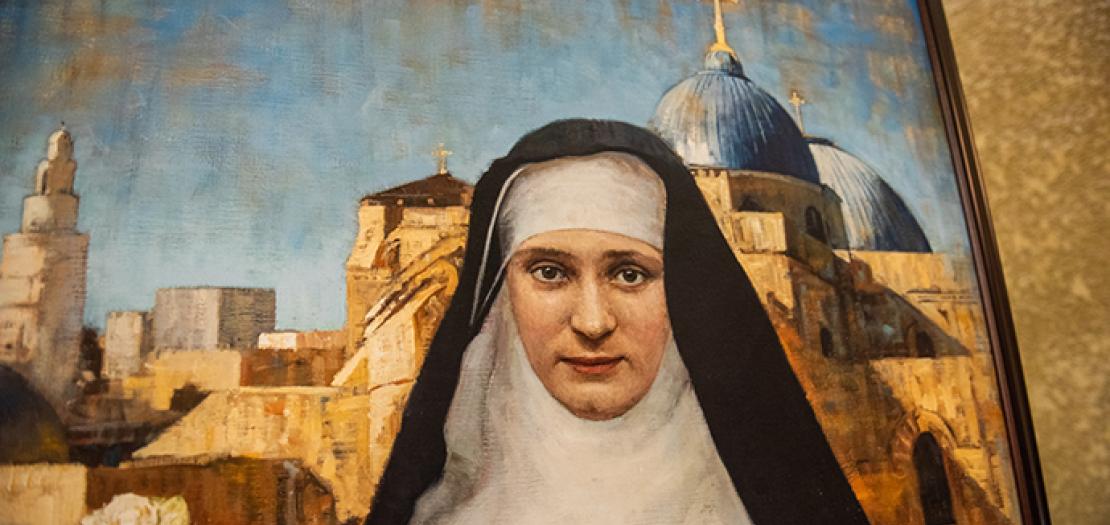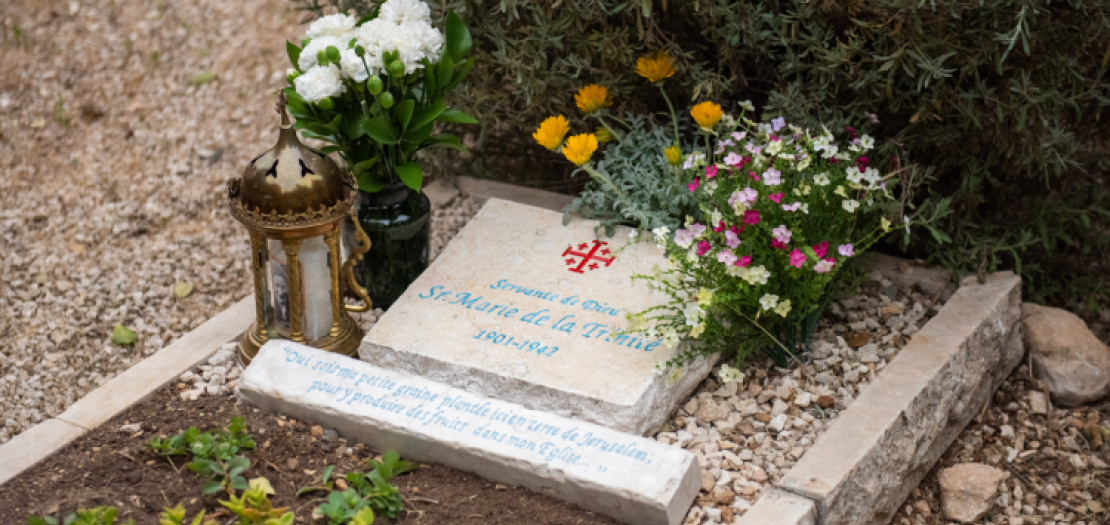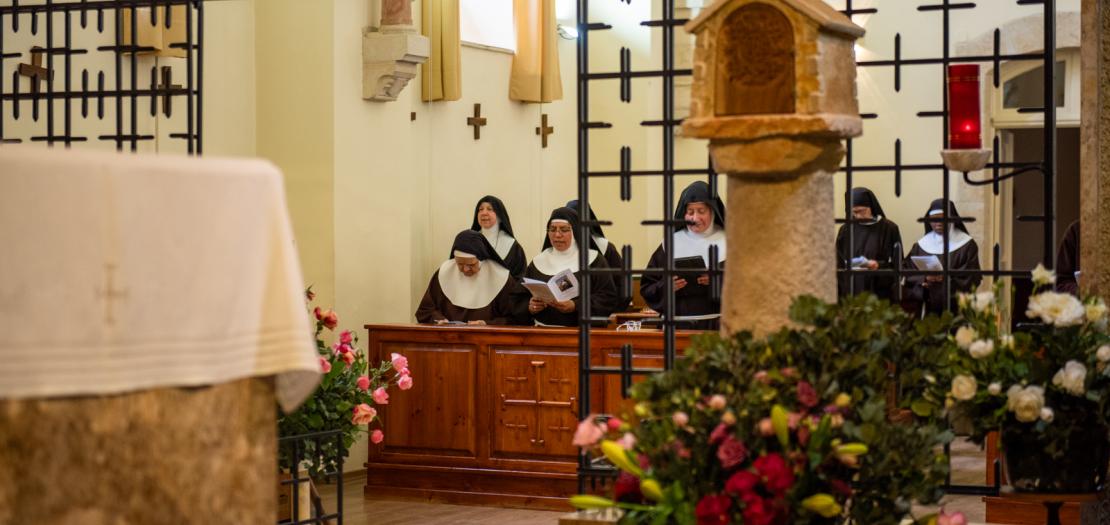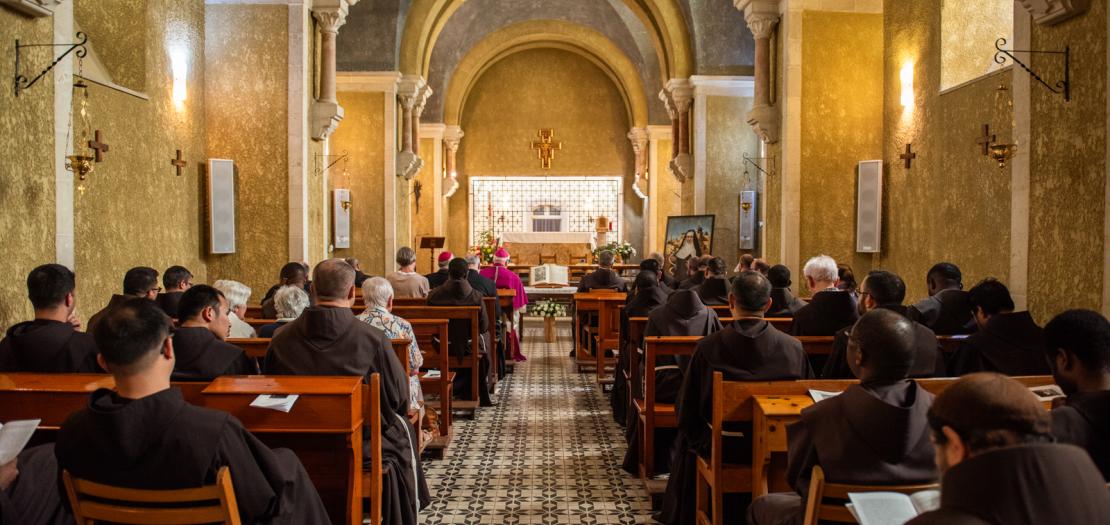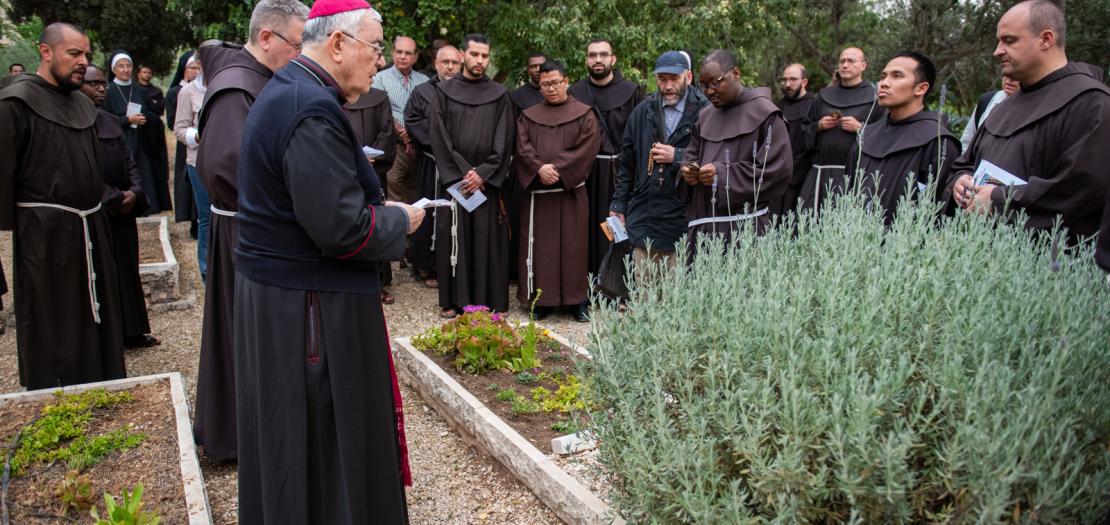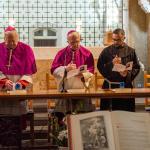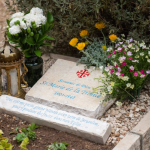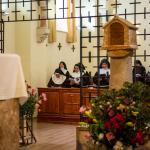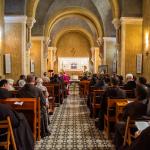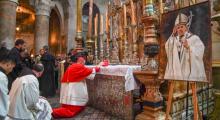Issued by the Catholic Center for Studies and Media - Jordan. Editor-in-chief Fr. Rif'at Bader - موقع أبونا abouna.org
The Monastery of the Order of Saint Clare in Talbiyeh witnessed a solemn celebration on the occasion of the official opening of the diocesan phase of the beatification and canonization cause of the Servant of God Sister Marie of the Trinity, presided over by Msgr. William Shomali, General Vicar. The celebration was attended by Msgr. Giacinto-Boulos Marcuzzo, along with Fr. Francesco Patton, Custos of the Holy Land. Also present were the members of the tribunal for the cause: Msgr. Ilario Antoniazzi, the Patriarch's delegate; Fr. Filippo Morlacchi, Promoter of Justice; and Sr. Marina Fischer, the Notary, who officially began their roles in studying the cause of this faithful servant of God.
Msgr. William Shomali delivered the official address on behalf of His Beatitude Cardinal Pierbattista Pizzaballa, Latin Patriarch of Jerusalem. In his speech, he highlighted the importance of this major ecclesial event, which sheds light on the witness of a young nun whose life was marked by both suffering and grace, and who lived with deep faith and heroic serenity. The session included the oath-taking by the tribunal members and the postulator, affirming their commitment to their responsibilities in this ecclesial process, which constitutes a fundamental step toward canonization.
Who is Sister Mary of the Holy Trinity?
Born on April 26, 1901, in Pretoria, South Africa, Luisa was the daughter of a Protestant pastor and missionary. Tragedy struck from the start: her mother died while giving birth to her, and Luisa was raised in Switzerland, her family’s country of origin, by an aunt. Her life was marked by a delicate balance between a strong, principled character and a fragile physical constitution, worsened by tuberculosis, repeated disappointments, and profound loneliness.
At 25, struggling to find meaning after a failed relationship and professional setbacks, Luisa reached her lowest point. It was then, in the darkness of a February night in 1926, that despair was pierced by light. She recounted a mystical experience—a vision of “a religious sister wearing a deep brown garment, belted with a cord”—which stirred an irresistible attraction to the cloister and a desire to receive the Eucharist.
From this moment, her path changed entirely. Her conversion to Catholicism became the cornerstone of a spiritual journey marked by perseverance, suffering, and a deepening intimacy with Christ. Despite repeated refusals from religious institutes due to her fragile health and recent conversion, Luisa remained steadfast in her pursuit of God’s will. This long period of waiting proved to be a slow and patient work of grace.
In 1938, she was finally accepted into the Poor Clare Monastery in Jerusalem, where she took the name Sister Mary of the Trinity. There, in the silence of cloistered life, she discovered her true vocation: a soul attuned to the inner voice of Christ. Her spiritual writings, penned in obedience to her confessor, chronicle a mystical dialogue with the Lord, centered on Eucharistic love, self-emptying, and total surrender.
Her spiritual legacy is preserved in her notebook, later published as “The Spiritual Legacy of Sister Mary of the Holy Trinity, Poor Clare of Jerusalem (1901-1942)”, translated into over seven languages. Theologian Hans Urs von Balthasar, in his preface to the French edition, described her spirituality as listening to the interior voice of the Lord, profound awareness of the free will God allows his created beings in choosing to respond to him, and the Vow of Victimhood considered as “a high degree of availability and non-resistance to all God’s decisions” within a profound Eucharistic orientation.
Sister Mary of the Trinity died on June 25, 1942, at the age of 41, from typhoid fever. Her life, lived in silence, is now emerging as a luminous testimony of the faith and the love of God, a witness to the mercy that can transform despair into holiness.


